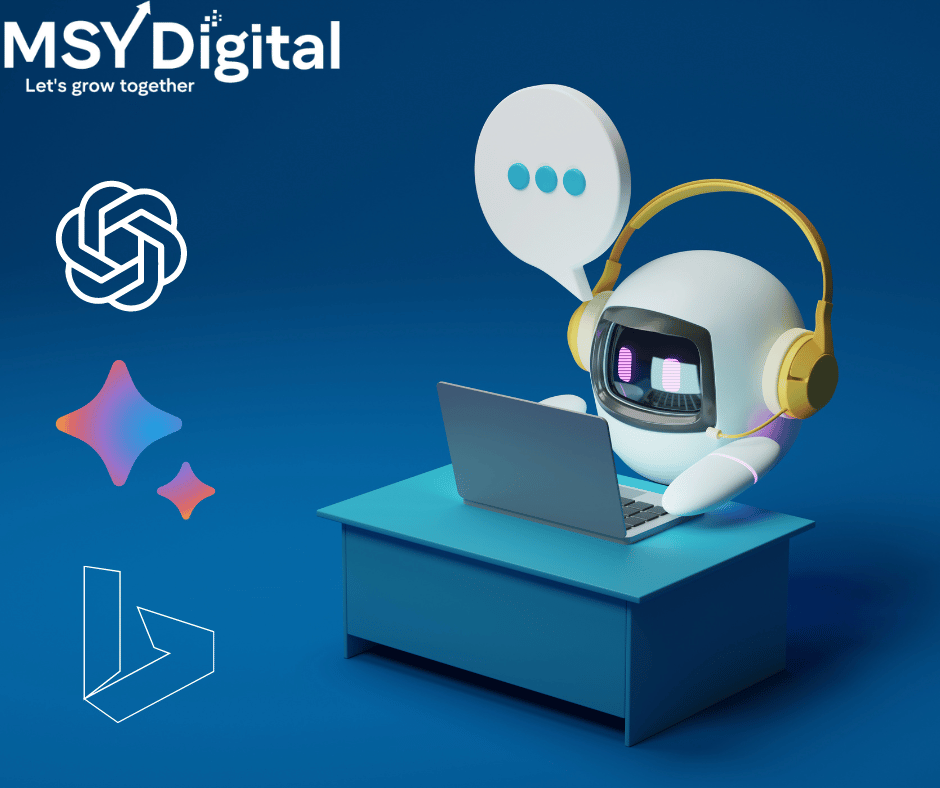
Introduction:
In the rapidly evolving landscape of artificial intelligence, conversational agents have emerged as powerful tools reshaping the way we interact with technology. Among the myriad of AI-driven conversational agents, three prominent players stand out: Bard, ChatGPT, and Bing AI Chat. In this comprehensive exploration, we will delve into the intricacies of each, unraveling their unique features, functionalities, and applications.
Understanding Bard:
Bard, developed by Google, is an advanced natural language processing (NLP) model designed to generate creative and coherent text. It draws inspiration from various sources to produce human-like responses, making it a versatile tool for content creation, storytelling, and interactive conversations. Bard's strength lies in its ability to understand context and deliver contextually relevant and engaging content.
Exploring ChatGPT:
ChatGPT, developed by OpenAI, is a descendant of the powerful GPT (Generative Pre-trained Transformer) model. It is specifically fine-tuned for generating text in a conversational style. Leveraging its vast training dataset, ChatGPT exhibits a remarkable capacity to comprehend and respond to user inputs in a coherent and context-aware manner. Its versatility has made it a popular choice for a wide range of applications, from content generation to interactive customer support.
Bing AI Chat:
Bing AI Chat, an integral part of Microsoft's AI ecosystem, is tailored for providing conversational experiences. It utilizes advanced machine learning techniques to understand user queries and generate relevant responses. Bing AI Chat is often integrated into various Microsoft services, enhancing user interactions across platforms and applications.
Differentiating Features:
Contextual Understanding:
Bard: Excels in understanding nuanced context, making it adept at creative content generation and interactive storytelling.
ChatGPT: Leverages its deep learning capabilities to maintain context within conversations, ensuring coherent and relevant responses.
Bing AI Chat: Integrates seamlessly with Microsoft services, utilizing context to enhance user interactions across various applications.
Training Data and Scale:
Bard: Benefits from Google's extensive dataset, enabling it to draw upon a wide range of information for generating responses.
ChatGPT: Built upon the GPT architecture, ChatGPT benefits from large-scale pre-training, offering a broad understanding of language nuances.
Bing AI Chat: Tightly integrated with Microsoft's ecosystem, it leverages the company's vast datasets to provide tailored responses.
Use Cases:
Bard: Ideal for creative writing, content generation, and interactive storytelling. Its ability to weave engaging narratives sets it apart.
ChatGPT: Widely used for content creation, interactive applications, and virtual assistance. Its versatility makes it suitable for a diverse range of use cases.
Bing AI Chat: Integrated into Microsoft services, it enhances user experiences in applications like Microsoft Teams, Bing, and more.
Fine-Tuning and Customization:
Bard: Offers limited fine-tuning options, limiting customization for specific tasks.
ChatGPT: Allows users to fine-tune the model on specific datasets, enabling customization for niche applications.
Bing AI Chat: Tailored for integration within Microsoft's ecosystem, providing a degree of customization within the company's applications.
Conclusion:
In the dynamic realm of conversational AI, Bard, ChatGPT, and Bing AI Chat represent cutting-edge developments that continue to shape the future of human-computer interaction. While Bard stands out for its creative content generation, ChatGPT excels in maintaining context within conversations, and Bing AI Chat seamlessly integrates into Microsoft's ecosystem, enhancing user experiences across applications.
Understanding the nuances and capabilities of each conversational agent is crucial for businesses and developers seeking to leverage AI in their applications. As technology advances, these models will likely evolve, offering even more sophisticated and specialized solutions for various domains. The journey into the world of conversational AI is undoubtedly an exciting one, with the promise of more intelligent and context-aware interactions on the horizon.





